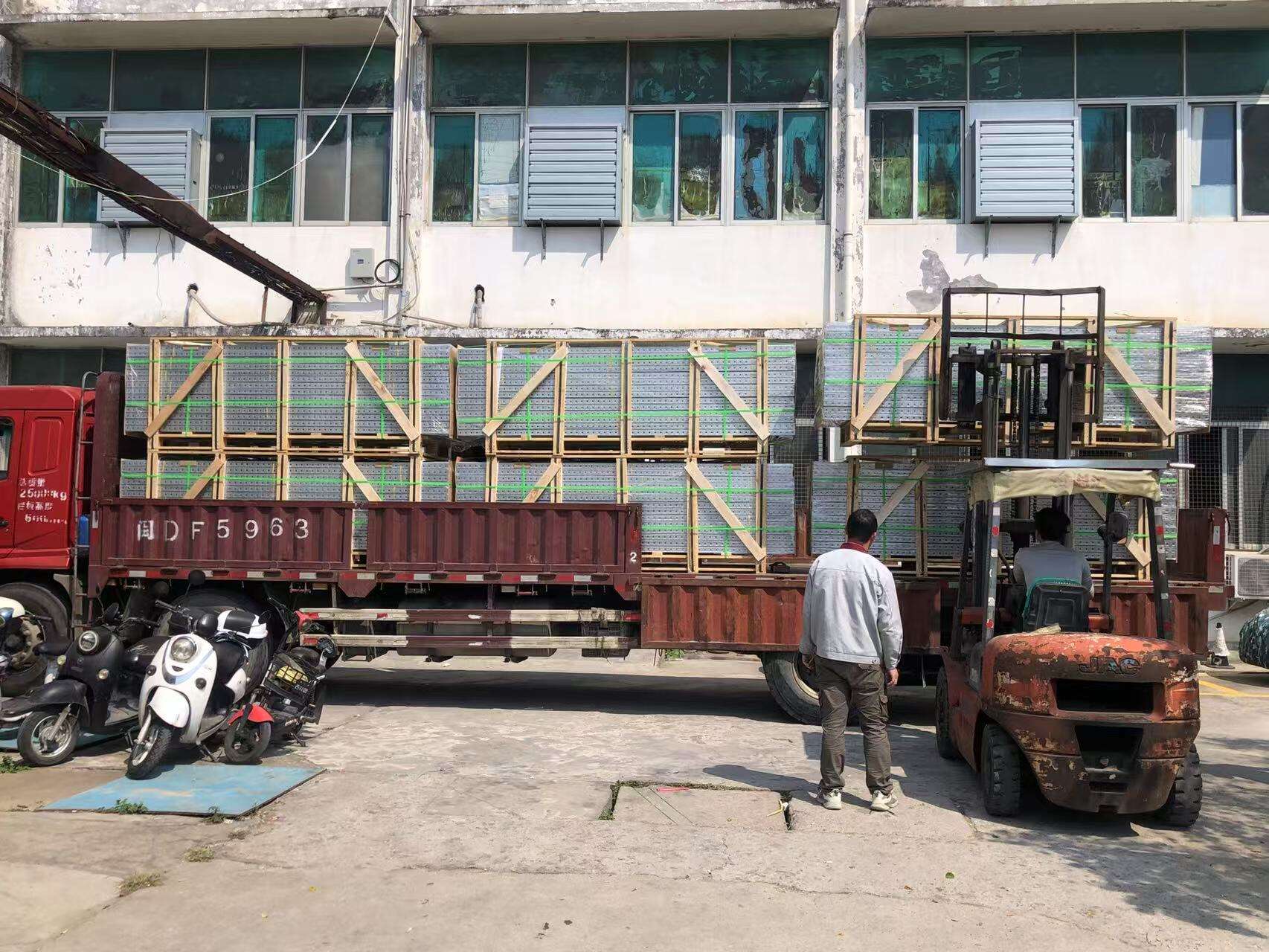In the Rewa Solar Park project, engineers faced significant challenges due to the geographical and climatic conditions. The area is characterized by hard strata, making traditional cable laying methods difficult. As Rakesh Singh, CEO of Mahindra Susten, noted, digging trenches was not feasible, prompting the team to devise an innovative cable laying solution. Additionally, extreme temperatures, often exceeding 40°C, posed challenges in terms of material performance. According to studies in the solar industry, high temperatures can adversely affect materials, leading to reduced efficiency and increased maintenance efforts. Innovative engineering solutions were crucial to overcoming these hurdles, ensuring the project’s success.

The innovative all-terrain cable tray design utilized in the Rewa Solar Park addresses the challenges of varying terrains, such as rocky or unstable ground. This design features vertical posts erected for the solar panel mounts, creating a synergy that not only simplifies installation but also enhances efficiency. By anchoring the cable trays to the same structures as the solar panels, engineers minimized land disruption and installation time. This synergy between cable trays and solar panel mounts underscores how thoughtful design can streamline operations and improve project outcomes. This approach serves as a model for future projects in similar challenging environments.

The innovative cable tray system at Rewa Solar Park significantly contributed to carbon footprint reduction, with the project expected to mitigate up to 1.5 million tons of CO2 annually. This impact is a testament to the project's environmentally conscious design, which has earned recognition from prestigious organizations such as the World Bank. The World Bank’s acknowledgment underscores the project's innovative and sustainable approach, lending it greater credibility and value. Such recognition not only highlights the importance of inventive engineering in renewable energy projects but also paves the way for further advancements in the industry, setting new benchmarks for excellence.

Stainless steel hooks are pivotal in enduring extreme weather conditions, known for their superior corrosion resistance and durability compared to traditional materials. According to various studies, stainless steel can last significantly longer in harsh environments due to its anti-corrosive properties. The use of these hooks in solar cable systems ensures that structural integrity is maintained even during severe weather, preventing failures and reducing the need for frequent replacements. This reliability is crucial for solar projects located in regions with fluctuating weather conditions, as it ensures continuous operation and optimal energy delivery.
Trenchless technology revolutionizes installation processes by minimizing surface disruption, offering substantial environmental benefits. This method, which involves installing utilities beneath the ground without extensive trench digging, significantly reduces ecological footprints and preserves landscapes. Statistics reveal that trenchless installations can cut project durations by up to 30%, leading to reduced costs when compared to conventional excavation. This efficiency not only accelerates project timelines but also lessens the environmental impact, making it an ideal choice for sustainable infrastructure development.
Custom name plates are essential in maintaining the order and efficiency of cable management systems. By providing clear and concise identification, these name plates simplify the organization of complex systems, facilitating easy maintenance and troubleshooting. A well-organized system can drastically reduce downtime during maintenance checks, as evident from a survey where experts highlighted the efficiency of labeled systems in speeding up problem resolution. In environments where precision is crucial—such as in solar farms—custom name plates play a critical role in enhancing operational efficacy and safety.

Using UV-resistant materials in photovoltaic cable trays is essential for prolonging their lifespan. These materials safeguard the trays from the harmful effects of sun exposure, which can cause premature degradation. By incorporating UV-resistant materials, we can ensure durability and reliability, especially in outdoor solar projects. Small shelf brackets also play a crucial role; they provide stability to cable management setups by securely holding everything in place, preventing any potential wobble or shift. Their robust construction ensures that even under challenging conditions, the cable trays remain steadfast, thereby maintaining the integrity of the entire system.
Seamless integration with solar panel mounts significantly enhances the structural integrity and functionality of photovoltaic setups. When cable trays are properly aligned with mounts, it leads to a more cohesive and efficient installation. For instance, several projects have demonstrated improved performance by optimizing this integration. Notably, when panels and trays are synchronized, it minimizes potential stress points and distributes weight evenly, preventing damage and enhancing longevity. This meticulous integration not only boosts performance but also ensures the sustainability of the solar power generation system.
Utilizing Low Smoke Zero Halogen (LSZH) insulation in photovoltaic cable trays is pivotal for meeting rigorous fire safety regulations. LSZH materials are designed to emit minimal smoke and zero halogenated toxic gases, which is crucial during a fire incident. Industry standards such as these are integral in enhancing safety in solar installations, as they reduce the risk of toxic exposure and improve visibility during an evacuation. By adhering to these fire safety standards, we prioritize the well-being of both personnel and property, ensuring that all solar installations are not only efficient but also safe and compliant.
The use of name labels significantly enhances maintenance efficiency in solar projects by providing clear identification of cables and components. This labeling system reduces downtime by enabling technicians to quickly locate and troubleshoot issues, ensuring minimal disruption to operations. For instance, a study published by the International Renewable Energy Agency highlighted that proper cable labeling could reduce maintenance time by up to 30%. This not only optimizes workflow but also contributes to cost savings, as less time is spent on identifying and resolving issues.
When choosing between above-ground and underground cable solutions for solar projects, several critical factors need consideration. Above-ground solutions are easier to install and maintain, reducing labor costs, but they may be vulnerable to environmental conditions like wind and UV exposure. On the other hand, underground solutions offer protection from physical damage but come with higher installation costs and more challenging maintenance. In a recent case study conducted in various geographical settings, above-ground installations in arid regions showed better performance due to reduced moisture exposure, whereas underground solutions were more efficient in urban areas with limited space.

Building Level Assessment (BLA) systems play a crucial role in enabling scalable and cost-effective solutions for growing solar projects. These systems facilitate detailed analysis and planning, allowing for efficient expansion with minimal disruptions. Industry leaders, such as the National Renewable Energy Laboratory, suggest that implementing BLA can lead to significant cost savings by optimizing resource allocation and decreasing overhead costs. By ensuring precise scalability, BLA systems empower solar developers to achieve better project outcomes and drive higher returns on investment.
The adoption of a modular design approach is crucial in facilitating the expansion of solar projects while minimizing disruptions. Modular designs enable project components to be easily added or rearranged, promoting flexibility and scalability. For instance, in several successful solar initiatives, companies have implemented modular designs, allowing them to expand their capacity seamlessly without significant interruptions to ongoing operations. This approach not only reduces downtime but also significantly lowers costs associated with project changes. By prioritizing modular design, solar project managers can ensure sustained growth and adaptability in a rapidly evolving industry.
AI-driven tools are revolutionizing the planning and optimization of solar installations, offering enhanced design and layout efficiency. Tools like PVcase harness artificial intelligence to analyze vast data sets, optimize panel layouts, and estimate potential energy yields with precision. An industry report highlighted that using AI-driven tools can increase planning efficiency by up to 30%, streamlining processes that traditionally took a significant amount of time and resources. By integrating these technologies, solar projects can benefit from improved accuracy, reduced costs, and more efficient use of space, ultimately enhancing overall project outcomes.
Emerging trends in sustainable manufacturing practices in cable tray production are gaining momentum, focusing on materials and processes that reduce environmental footprints. Manufacturers are increasingly adopting recycled materials and energy-efficient production techniques to diminish their impact on the environment. According to industry reports, there's a noticeable shift towards eco-friendlier options, with a projected 20% increase in the use of sustainable materials by 2025. As the construction sector continues to emphasize green practices, sustainable cable tray manufacturing is becoming a key component of environmentally responsible solar projects, aligning with the global push for sustainability.


Copyright © 2024 by Xiamen Tongchengjianhui Industry & Trade Co., Ltd. - Privacy policy